Amish Affiliations
You may have heard the term affiliation used to describe this or that Amish group. So just what is an affiliation?
Broadly speaking, affiliations describe groupings of Amish churches of similar practice, identity, and lifestyle. The best discussion of Amish affiliations I’ve come across is in Chapter 8 of The Amish by Donald Kraybill, Karen Johnson-Weiner, and Steven Nolt. The authors describe the concept:
Affiliated congregations share similar Ordnungs, which specify distinctive lifestyles and visible symbols that set them apart from other affiliations. These interwoven features create a unique identity that is expressed in use of technology and consumer products, style of architecture, levels of income, degree of social isolation, and types of occupation as well as in hairstyles, dress patterns, and carriage color and style. Members of an affiliation have a collective awareness of in-group membership and are known as a distinctive group within Amish society and, sometimes, by non-Amish people (p. 138).
In brief, “affiliations are loose federations of like-minded Amish churches” (p. 140). The Amish features a comprehensive chart of affiliations (p. 139). The authors use the metrics of a minimum of 2 districts, and at least 20 years of shared history to define an affiliation.

Based on these parameters, they have identified over 40 Amish affiliations, ranging in size from the Lancaster County affiliation (291 church districts spread over 37 settlements in 8 states as of 2011) down to the Kokomo, Indiana affiliation, of just 2 districts in a single settlement.
Affiliated churches don’t necessarily do everything alike–and often won’t, the larger the affiliation becomes, since decisions on technology and other guidelines are taken by the local congregation.
So you’ll see some diversity in lifestyle even within an affiliation, such as within Elkhart and Lagrange Counties where you can observe differences across the settlement (with visibly plainer districts in the east and northwest portions of the community).
Affiliations and Fellowship
When you’re talking about an affiliation, it’s important to remember this is something that is distinct from a settlement or congregation, though sometimes an entire affiliation will be confined within a single settlement. You see this with Kokomo mentioned above, or in the much larger examples of Daviess County, Indiana (26 districts in one settlement/affiliation), or Nappanee, Indiana (37 districts).
These are churches which either haven’t produced lasting affiliated daughter settlements and/or which aren’t, for whatever reason, affiliated with Amish in other communities. This doesn’t mean they don’t interact in other ways, such as marrying across groups or preaching in each other’s services.
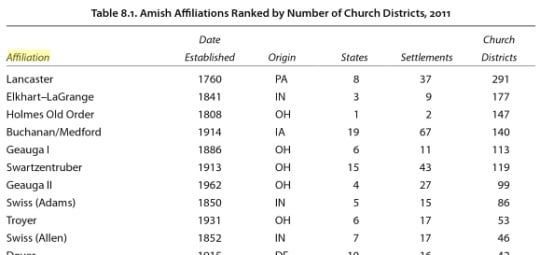
Amish of different (but not too different) stripes maintain fellowship ties across affiliations. For instance the Andy Weaver Amish of Holmes County, Ohio are in fellowship with Amish in Lancaster County, as are those at Kalona, Iowa with the Amish at Bloomfield, Iowa, among many examples.
Being in fellowship means that two groups “have a spiritual affinity that allows them to collaborate on some level” (p. 151). This can include preaching in one another’s services, exchanging the holy kiss, openness to intermarriage, and dispute mediation.
There are distinctions between being in “full fellowship” and “partial fellowship”. A church’s stance on shunning, technology, occupations and other issues may enable or hinder fellowship with another group.
Growing Diversity
The development of affiliations has reflected the widening diversity of Amish society. At the beginning of the 20th century, there were only 3 or 4 Amish affiliations. Today, this number exceeds 40, and surpasses 65 if you count the subgroups within certain affiliations (The Amish, p. 138).
While material differences can exist within an affiliation, the starkest differences are found across affiliations. The authors of The Amish quote a Swartzentruber bishop, who says about the Lancaster Amish: “They’re as different from us as you [English] are” (p. 143). The feeling may very well be mutual–often enough, you hear something similar from more progressive Amish about the most traditional churches.

Variations across affiliations also appear in fertility and retention. The Amish population doubles (100% growth) every 20-22 years. But different affiliations exhibit different rates of growth.
For example, Swartzentruber Amish showed an increase of 171% from 1991 to 2010. Towards the other end of the spectrum, Amish within the Arthur affiliation had grown only 66% over that time, and New Order Amish only 53% (p. 153).
Other facts about Amish affliations
A few more interesting facts about Amish affiliations (from Chapter 8 of The Amish):
- Names of affiliations may come from a geographical location, the name of a founder or key leader, or be given by an outside group.
- If I told you the top 3 affiliations by size were Lancaster, Elkhart-Lagrange, and Holmes County Old Order, you might not be surprised, given that those locations also describe the 3 largest individual communities. But would you have a guess at number 4?
- It’s the Buchanan/Medford affiliation, originating in 1914 in Buchanan County, Iowa. The Buchanan County settlement today is only 7 districts in size. This is the most dispersed of all the affiliations, with 140 churches spread across 67 communities. As a conservative affiliation, this pattern may reflect a tendency of traditional Amish to favor smaller communities and less populated locations.
- There are over 130 congregations that are not associated with a wider affiliation.
You’ll find a lot more worth reading on Amish affiliations in The Amish.


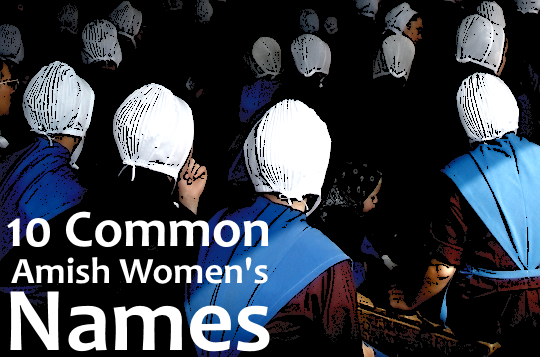

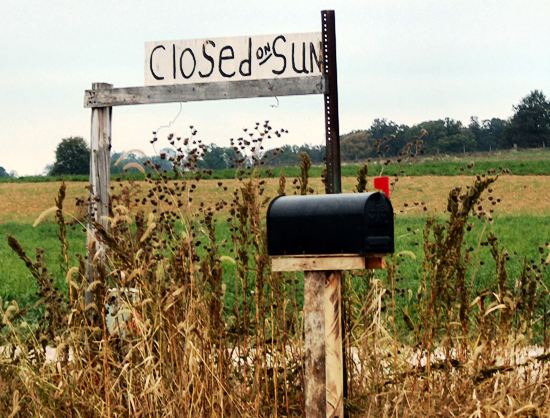
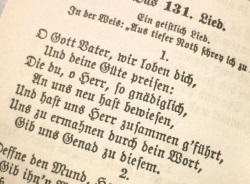


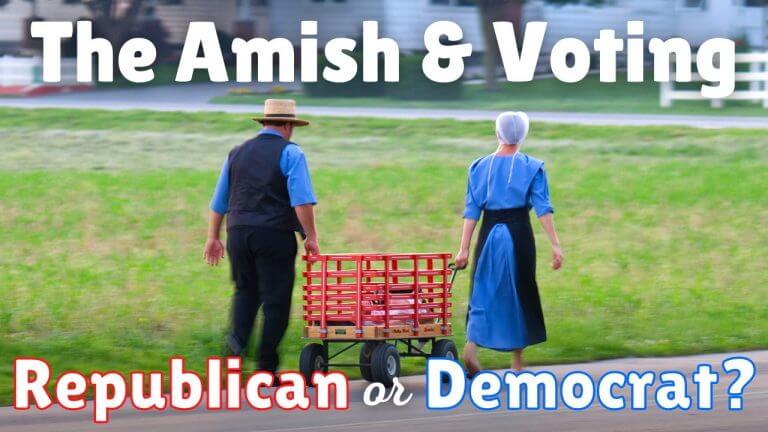
Thanks for a very interesting and helpful post. In my twenty years of travel around Amish country, I had sensed there was something like affiliations, but it wasn’t until I read Chapter 8 of The Amish that I really began to understand this part of Amish life. It helped me to think of affiliations sort of like other Protestant church groups; for example “Baptist” is one type of Protestant churches, but then there multiple types of Baptists — Southern Baptists, American Baptists, National Baptists, Progressive Baptists, etc.
Is there somewhere a more detailed listing of what districts are part of what specific affiliations? I just looked in Chapter 8 of
The Amish (and footnotes to the chapter) and couldn’t find any notation. It seems like some of the information came from Stephen Scott and I wonder if he had a lisiting. I guess an Amish person in a specific district could tell you what affiliation their district is part of, but I would think they might think it was inappropriate if that question was asked by a visitor to the district.
Same here ...
I had sort of the same experience as Al did; I could tell over the years that there were differences in the various Amish communities that I visited, but I never could find anyone that could explain those differences. I also wasn’t willing to ask an Amish person to explain those differences, but if I had ever made a close friendship with one I would have been willing to ask.
After I read Chapter 8 in The Amish I was better able to wrap my mind around the concept, though I still couldn’t tell you the various nuances and particulars of any given affiliation without referencing that chapter of the book.
Figuring out district affiliation
Oldkat I think you can ask, I know I have asked before numerous times with people I had just recently met. If you explain why you are curious–you enjoy visiting Amish settlements and their businesses, for instance, and just curious which other settlements they are connected to–it’s not really a weird or inappropriate question.
Amish church district affiliations
Al there is a listing but I don’t think it is ever been published. Stephen Scott was compiling it/compiled it (he really had a knack for, and to me it seemed a real enjoyment for, keeping track of the different Amish groups) and I believe his successor at the Young Center Edsel Burdge took it over after he passed away.
I think you can get an idea of individual district ties by asking questions once you get talking to someone. You might ask which other communities they are associated with or back and forth with and be able to deduce using the list in Chapter 8 and the 2013 individual settlement list by Donnermyer & Luthy. I don’t think it would be inappropriate once someone understands your interest in the Amish and curiosity.
Affiliations, fellowships…partial fellowships…it sure can be confusing! This just further demonstrates that all Amish are not alike, despite what the “average Joe/Jane” may think! 😉
Alice Mary
Example of partial fellowship
Alice Mary, isn’t that the truth. On partial fellowships, I remembered Mark Curtis of Belle Center OH recently shared a good example of that via his father Don. Don wrote:
“He said that Belle Center and Union Grove are in partial fellowship. He said that because Union Grove has electricity and tractor farming, those are considered too advanced by Belle Center to be in full fellowship. Belle Center would allow Union Grove preachers to preach at a regular church service. But a Union Grove bishop would not be allowed to officiate at a Belle Center communion service.”
https://amishamerica.com/north-carolina-amish-barn-raising/comment-page-1/#comment-72440
And here’s another short explanation of affiliation, settlement, church district, for what it’s worth: https://amishamerica.com/how-are-amish-communities-organized/
Watchman watch for the anti christ who is coming soon
I can only plant a seed: You and God must make it grow and He gives everyone free will to Believe anything they want.
Zechariah 14, V2: For I will gather all nations against Jerusalem to battle; and the city shall be taken, and the houses rifled, and the women ravished; and half of the city shall go forth into captivity, and the residue of the people shall not be cut off from the city.
Google EMP (Electro Magnetic Pulse): Electrical ( computers, cars, electricity, etc) will not work.
http://www.achildofgod777.com (Free)
A Child of the Living God
Spiritual Completeness
Super User
Parable of the Fig Tree when summer is near and arrival of antichrist possibly in 2018/2020 followed by …
I find it interesting that the largest growth is in the Swartzentruber Amish since it is my understanding that they are the most conservative.
I would say it makes sense for the Swartzentruber to be the fastest growing (at least in percentage) because of their conservatism:
1) Likely larger families;
2) It’s more difficult for someone to adjust to the “English” way of life, and their exposure to English culture is less as the Swartzentrubers tend to locate in very rural areas and actively eschew tourism and other unnecessary contacts.
I think that has a lot to do with it; the authors also suggest strict shunning which is typically found in more conservative groups may play a role. The #2 group listed is the Adams County Swiss affiliation (163% growth), also a conservative group.
Swartzentruber not surprised
Thank you for this beneficial article. Makes your head spin in a way. Maybe this has been answered-WHO determines the Ordnung-the church members collectively, or the bishop-and how does that work?
Regarding Swartzentrubers, I had the good pleasure of inviting 2, a father & son, into my VW Beetle in February during an almost blizzard. They were waiting for the same bus, at an open air drop off, that I was. The son was 17 years old. He had a cute sense of humor. I asked him if he was going to remain Amish (granted-dad was not in the car yet) so he said, “Yes, I don’t want to be part of the world”. He said he was probably going to be baptized next year. I really enjoyed our short chat-he seemed happy & sure of himself. Also I was impressed because they had been at a wedding was why they were traveling and he loved the wedding. He said it’s like church the first few hours, then food and talking. Anyway, Swartzentrubers are what we have in our county and I always walk away with something ‘good’ after chatting with them.
Forming the Ordnung
Neat story Valerie. And sounds like you did your good deed for the day by providing that VW “waiting room”.
On Ordnung, we have touched on this before, but no harm in asking 🙂 You might try this article where there is a general description of how Ordnung develops: https://amishamerica.com/what-is-the-amish-ordnung/
This one also might be useful: https://amishamerica.com/how-do-amish-review-the-unwritten-ordnung/
Thank you Erik, will look at that-I wish more people came to this website for information-
Good deed? I benefited from the conversation with the Amish. Guess what though? I ended up STUCK in that snow. By the time that 2 hour late bus arrived, it had snowed so much I couldn’t get out. SO, all 6 buggies left with no problem. One Amish man tried to push my car out, poor guy in that blizzard type windy snowstorm. But no use-he said if I just had a chain they could pull me out. I though that was so nice. Yeah. Benefits of autos, LOL. Anyway, 3 hours of sitting, AAA got me out!
Whoops–well at least you had company for some of your time in the storm. Cars are superior to horse-drawn by most measures but in this case I think it’s Buggies 1, Cars 0 🙂
Thank you for this article. I have long wondered which affiliation my friends belong to. After reading LOTS of articles and almost all their comments on this site, that curiosity has overwhelmed me, and now I must ask them! I have a feeling their affiliation might have changed. Does that happen much, to your knowledge?
Jan, good question…one example would be people marrying from one into another affiliation, for example someone from Lancaster County marrying a person from Holmes County and moving into that settlement. You do have families who move from one settlement to another–often this can be from a parent to a daughter settlment (e.g., from Lancaster County to Lebanon County) but not necessarily. To give an example, not too long ago I met a family from the Adams County Swiss Amish who had moved to the small Hicksville, OH settlement.
Thanks, Erik! That makes a lot of sense.
I decided to just ask them. 🙂
Can I start my own non-affiliated Amish fellowship?
I have been actively trying to become active in a somewhat conservative Amish-Mennonite church? However there are non around me and I have been told that the only way to have “affiliation” with several known churches/affiliations is to be under the bishop of a local congregation. What would stop me, if anything, from forming my own non-affiliated fellowship? As far as the Ordnung, I kind of have an idea that I fit in between a conservative group, old order and possibly a Mennonite church with no real conservative ideas.
Swiss Amish joining the Old Order Amish
Could a Swiss Amish person who has been shunned join an Old Order Amish church?